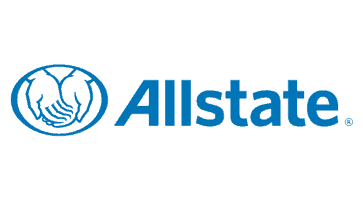Hurricane season has begun: is your building prepared?
Practical steps for residents and managers in high-rise communities
As June 1 approaches, the official start of hurricane season reminds us that preparation isn’t optional—it’s essential. Whether you’re a resident of a high-rise in Florida or a property manager overseeing dozens of units, now is the time to act. At Dry Up Restoration, we’ve seen firsthand how advance planning can make all the difference between swift recovery and long-term disruption.
Let’s walk through what you need to do before, during, and after the storm—especially if you live in or manage a high-rise building.

The countdown has begun
Florida’s hurricane season is a yearly reality. Recent events and educational initiatives like the Hurricane Season Seminar at Echo Aventura show how seriously communities are taking preparedness—and with good reason. High-rise buildings face unique risks during hurricanes: intensified wind pressure at higher levels, power outages, blocked exits, and isolated residents.
The more prepared you are, the safer your home, neighbors, and property will be.
Why high-rise communities require special attention
Living in a tall building comes with structural challenges during extreme weather. Unlike single-family homes, high-rise residents depend on shared systems—elevators, generators, water pumps—that can fail under storm conditions. Coordination between residents and property management is vital for safety.
Here’s what makes high-rises particularly vulnerable:
- Higher wind exposure on upper floors.
- Limited access if elevators are shut down.
- Longer recovery time for utilities and common areas.
- Evacuation logistics are more complex and time-sensitive.
Key preparedness steps for residents
Preparation starts long before a storm warning. Here’s how to protect yourself, your family, and your unit:
Before hurricane season:
- Review your insurance. Confirm your renter’s or homeowner’s policy is current, and understand what your building’s policy covers—and what it doesn’t.
- Update emergency contacts. Share your latest info with building management and save local emergency numbers.
- Understand emergency procedures. Know your evacuation routes and any shelter-in-place guidelines.
- Inspect your windows. Ensure they’re hurricane-proof or have approved shutters.
- Back-up power check. Ask management about generator access and how long it can supply power.
When a hurricane watch is issued:
- Stay informed. Use NOAA weather radio or trusted apps.
- Stock up on essentials:
- Non-perishable food and bottled water (3 days per person)
- Medications
- Battery-powered radio
- Flashlights and extra batteries
- First aid supplies
- Hygiene items
- Portable phone chargers
- Prep your pets. Secure food, water, carriers, and know where pet-friendly shelters are.
During a hurricane warning:
- Secure your unit. Lock all windows and doors.
- Charge devices. Fully charge all electronics and unplug appliances to avoid surges.
- Protect important documents. Use waterproof containers and back up files digitally.
- Clear balconies and common areas of loose furniture or debris.
- Evacuate early. Don’t wait—especially if you’re on a high floor. Take your pets and supplies for at least 5 days.
Action plan for property managers
If you’re responsible for managing a building, your role is critical to protecting lives and property.
Here’s how to prepare your community:
- Communicate clearly. Establish group chats, emails, or bulletin systems to relay real-time updates.
- Inspect and reinforce infrastructure. Check generators, storm shutters, emergency lights, and building drains.
- Secure common areas. Remove outdoor furniture, signage, and other potential flying debris.
- Post evacuation information. Let residents know the latest local evacuation orders and nearby shelters.
- After the storm, coordinate cleanup and damage reports swiftly.
What to do after the storm
Once the storm has passed, caution is still critical. Here’s what to keep in mind:
- Don’t return immediately. Wait for authorities to declare the building safe.
- Report damages. Notify building management and your insurer about water intrusion, broken windows, or structural issues.
- Avoid using elevators until cleared for safety.
- Reconnect with loved ones. Let friends and family know you’re safe.
- Assist others. If it’s safe, support elderly neighbors or those who may need help cleaning up.
How Dry Up Restoration supports your recovery
At Dry Up Restoration, we provide 24/7 emergency response for:
- Water extraction and mitigation
- Wind and storm damage restoration
- Structural drying and mold prevention
Our team is trained to work quickly in high-rise environments, helping both residents and property managers navigate the critical first hours after a hurricane. We also assist with insurance documentation and repair coordination to help you get back to normal faster.
So…
Preparedness isn’t just about storing supplies—it’s about having a plan. In high-rise communities, where every floor has different challenges, coordination and communication are vital.
If your building needs a trusted restoration partner this hurricane season, don’t wait for the storm to strike.
Contact Dry Up Restoration today at www.dryuprestoration.com and let’s prepare for what’s ahead—together.























